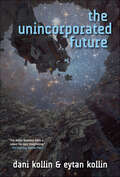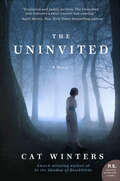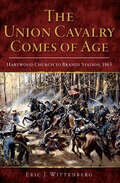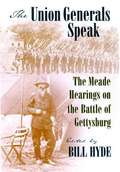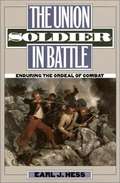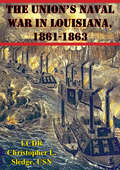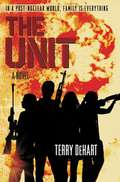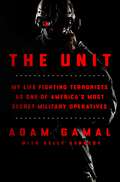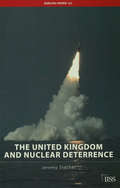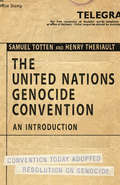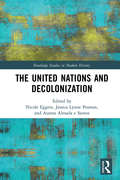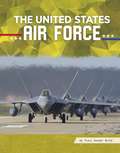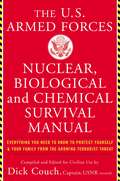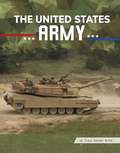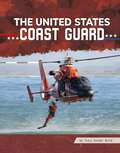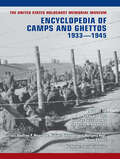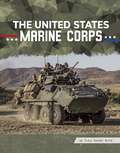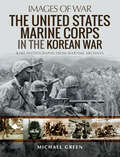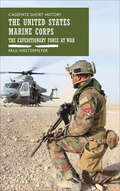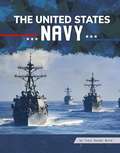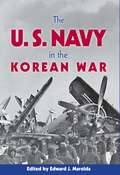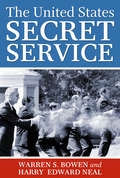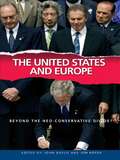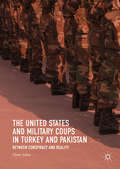- Table View
- List View
The Unincorporated Future (The Unincorporated Man #4)
by Dani Kollin Eytan KollinThe revolution launched by the unincorporated man comes to an explosive conclusion in this thought-provoking science fiction saga finale.Sandra O’Toole is the president of the Outer Alliance, which stretches from the asteroid belt to the Oort Cloud beyond Pluto. Resurrected following the death of Justin Cord, the unincorporated man, O’Toole has become a powerful political figure and a Machiavellian leader determined to win the civil war against the inner planets at almost any cost. But the war has been going badly, in part because of the great General Trang, a fit opponent for the brilliant J. D. Black. Choices have to be made to abandon some of the moral principles upon which the revolution was founded. It is a time of great heroism and great betrayal, madness, sacrifice, and shocking military conflict. Nothing is predictable, even the behavior of artificial intelligences. There may be only one way out, but it is not surrender.
The Uninvited: A Novel
by Cat WintersA rural Illinois woman encounters ghosts, fear, and lethal hatred after surviving the 1918 influenza outbreak in this gothic psychological thriller.Twenty-five year-old Ivy Rowan rises from her sickbed after being struck by the great influenza epidemic of 1918, only to discover the world has been torn apart in just a few short days. But Ivy’s life-long gift—or curse—remains. For she sees the uninvited ones—ghosts of loved ones who appear to her, unasked for and unwelcomed, for they always herald impending death. On that October evening in 1918, Ivy sees the spirit of her grandmother, rocking in her mother’s chair. An hour later, she learns her younger brother and father have killed a young German out of retaliation for the death of Ivy’s older brother Billy in the Great War.Horrified, she leaves home and soon realizes that the flu has caused utter panic and the rules governing society have broken down. Ivy is drawn into this new world of jazz, passion, and freedom, where people live for the day, because they could be stricken by nightfall. She even enters into a relationship with the murdered German man’s brother. But as her “uninvited guests” begin to appear to her more often, she knows her life will be torn apart once again, and terrifying secrets will unfold.Perfect for those who loved The Thirteenth Tale by Diane Setterfield or The Vanishing by Wendy Webb.
The Union Cavalry Comes of Age: Hartwood Church to Brandy Station, 1863
by Eric J WittenbergAn award-winning cavalry historian shares a myth-busting look at how the Union cavalry surpassed its Confederate counterpart and helped win the Civil War. The Army of the Potomac&’s mounted units suffered early in the Civil War at the hands of the horsemen of the South. However, by 1863, the Federal cavalry had evolved into a fearsome fighting machine. Despite the numerous challenges occupying officers and politicians, as well as the harrowing existence of troopers in the field, the Northern cavalry helped turn the tide of war much earlier than is generally acknowledged. In this expertly researched volume, historian Eric J. Wittenberg describes how the Union cavalry became the largest, best-mounted, and best-equipped force of horse soldiers the world had ever seen. The 1863 consolidation of numerous scattered Federal units created a force to be reckoned with—a single corps ten thousand strong. Wittenberg&’s research thoroughly debunks the narrative that the Confederate &“cavaliers&” were the superior force.
The Union Generals Speak: The Meade Hearings on the Battle of Gettysburg
by Bill HydeThis book is on the Army of the Potomac and the testimonies of some of the most important men involved in the battle of Gettysburg on the Federal side.
The Union Soldier in Battle
by Earl J. HessA study of the experience of combat by union soldiers during the Civil War.
The Union’s Naval War In Louisiana, 1861-1863
by LCDR Christopher L. Sledge USNUnion naval operations in Louisiana featured some of the most important operations of the Civil War, led by two of the US Navy's most distinguished officers. During the period from 1861 to 1863, Admirals David G. Farragut and David D. Porter led Union naval forces in Louisiana in conducting: a blockade of the New Orleans, the Confederacy's largest city and busiest commercial port; a naval attack to capture New Orleans in April 1862; and joint operations to secure the Mississippi River, culminating in the surrender of Vicksburg and Port Hudson in July 1863. These operations have been the focus of many historical studies, but their relationship to Union naval strategy has often been overlooked. The primary elements of that strategy, as it applied in Louisiana, were a blockade of the Confederate coast and joint operations on the Mississippi River. This thesis studies the influences that shaped Union naval strategy in order to provide a strategic context for analyzing the development of naval operations in Louisiana from the implementation of the blockade to the opening of the Mississippi River. The result is a historical case study of the relationship between naval strategy and operations in a joint environment.
The Unit
by Terry DehartJerry Sharpe is an ex-marine and, for him, survival means protecting his family by any means necessary. Susan is learning just how far a mother will go for her children. But how far will she go for a man she doubted before the bombs fell? As Jerry's training and instincts take over, she is certain of one thing -- her children need her. Melanie was going to go to college. Now, she is struggling to find a way to live in a world gone mad without losing sight of what she believes in. Scotty has a new mission - more than survival. He was saved, and he'll be damned if he won't fight for what's right. And Bill -- Bill was locked up, but the power went out and the guards left. Now he and his fellow inmates have realized that everything is free for the taking. . . if you're strong enough to hold on to it.
The Unit: My Life Fighting Terrorists as One of America's Most Secret Military Operatives
by Kelly Kennedy Adam GamalThe first and only book to ever be written by a member of America's most secret military unit―an explosive and unlikely story of service and sacrifice.Inside our military is a team of operators whose work is so secretive that the name of the unit itself is classified. Highly-trained in warfare, self-defense, infiltration, and deep surveillance, "the Unit," as the Department of Defense has asked us to refer to it, has been responsible for preventing dozens of terrorist attacks in the Western world. Never before has a member of this unit shared their story — until now.From Adam Gamal, one of the only Muslim Arab Americans to serve inside “the Unit," comes an incisive firsthand account of our nation’s most secretive military group. When Adam arrived in the United States at the age of twenty, he spoke no English, and at 5’1” and 112 pounds, he was far from what you might expect of a soldier. But compelled into service by a debt he felt he owed to his new country, he rose through the ranks of the military to become one of its most elite and skilled operators.With humor and humility, Adam shares stories of life-threatening injuries, of the camaraderie and capabilities of his team, and of the incredible missions―but also of the growth he experienced as he learned to understand his own moderate faith.Enthralling and eye-opening, The Unit is at once a gripping account of the fight against terror, an urgent examination of the need for diversity, and an inside look at how America fights its battles abroad in the modern age of terrorism.This edition includes a 16 page color photo insert.
The United Kingdom and Nuclear Deterrence (Adelphi Paper #386)
by Jeremy StockerIn December 2003 the British government announced that within a few years it would need to take decisions about the future of Britain's strategic nuclear deterrent. Exactly three years later, its plans were revealed in a White Paper. The existing Trident system is to be given a life-extension, which includes building new submarines to carry the missiles, costing £15–20 billion. Britain has a substantial nuclear legacy, having owned nuclear weapons for over half a century. The strategic context for the deterrent has changed completely with the end of the Cold War, but nuclear weapons retain much of their salience. This Adelphi Paper argues that it makes sense to remain a nuclear power in an uncertain and nuclear-armed world. Given that deterrence needs are now less acute, but more complex than in the past, the paper asserts that deterrence also needs to be aligned with non-proliferation policies, which seek to reduce the scale of threats that need to be deterred. Somewhat overlooked in current policy are appropriate measures of defence, which can raise the nuclear threshold and, if required, mitigate the effects of deterrence failure. It concludes that the government's decisions about the future form of the deterrent are very sensible, but cautions that they still need to be integrated into a broader policy that embraces diplomacy, deterrence and defence to counter the risks posed by nuclear proliferation.
The United Nations Genocide Convention: An Introduction (G - Reference, Information And Interdisciplinary Subjects Ser.)
by Samuel Totten Henry C. TheriaultIt is virtually impossible to understand the phenomenon of genocide without a clear understanding of the complexities of the United Nations Convention on the Prevention and Punishment of the Crime of Genocide (UNCG). This brief but cogent book provides an introduction to the unique wording, legal terminology, and key components of the convention, which was adopted by the United Nations General Assembly in 1948. Providing clarity on the distinctions between genocide, crimes against humanity, war crimes, and ethnic cleansing, this book is designed to be an entry into further study of genocide in its legal, historical, political, and philosophical dimensions. Key terms, such as intent and motive, are explained, case studies are included, and a detailed bibliography at the conclusion of the book offers suggested avenues for more advanced study of the UNCG.
The United Nations and Decolonization (Routledge Studies in Modern History)
by Nicole EggersDiffering interpretations of the history of the United Nations on the one hand conceive of it as an instrument to promote colonial interests while on the other emphasize its influence in facilitating self-determination for dependent territories. The authors in this book explore this dynamic in order to expand our understanding of both the achievements and the limits of international support for the independence of colonized peoples. This book will prove foundational for scholars and students of modern history, international history, and postcolonial history.
The United States Air Force (All About Branches of the U.S. Military)
by Tracy Vonder BrinkThe Air Force was once a part of the Army. Today, it stands as its own powerful military branch. It relies on highly trained airmen and advanced aircraft to complete missions around the world. Learn about the roles of airmen and their training, and get an inside look at the advanced equipment, aircraft, and weapons the Air Force uses.
The United States Armed Forces Nuclear, Biological and Chemical Survival Manual: Everything You Need to Know to Protect Yourself and Your Family from the Growing Terrorist Threat
by Dick CouchExperts agree that the next terrorist attack on our soil will not come in the same form as September 11. The possibility of nuclear, chemical or biological attack is increasingly likely. The U. S. Armed Forces Nuclear, Chemical and Biological Counter-Terrorism Handbook will enable its readers to survive such an attack. It contains the best practices of the United States' military, completely edited and adapted for civilian use. For example, readers will learn how to:Gain knowledge of an impending chemical attack using a simple warning system; Protect against biological threats such as anthrax with a series of inoculations; Guard against fallout from a terrorist nuke; Achieve basic protection during chemical or biological attacks with a simple mask; and Administer first aid after nuclear, chemical or biological attacks with a simple first aid kit. It's all here. This handbook is the single most effective tool for civilians to protect themselves and their loved ones against the threat looming over our homeland.
The United States Army (All About Branches of the U.S. Military)
by Tracy Vonder BrinkThe Army is the biggest and oldest branch of the U.S. military. It relies on highly trained soldiers to complete missions around the world. Learn about the roles of soldiers and their training, and get an inside look at the advanced equipment, vehicles, and weapons the Army uses. When duty calls, the Army is always ready to defend.
The United States Coast Guard (All About Branches of the U.S. Military)
by Tracy Vonder BrinkThe U.S. Coast Guard responds to about 20,000 search-and-rescue cases a year. Its members also play an important role in enforcing the nation’s laws. Learn about the roles of Coast Guard members and their training, and get an inside look at the different types of ships, aircraft, and equipment this branch uses to complete its important missions around the world.
The United States Holocaust Memorial Museum Encyclopedia of Camps and Ghettos, 1933–1945, Volume IV: Camps and Other Detention Facilities Under the German Armed Forces
by Mel HeckerThe United States Holocaust Memorial Museum Encyclopedia of Camps and Ghettos, 1933–1945, Volume IV aims to provide as much basic information as possible about individual camps and other detention facilities. Why were they established? Who ran them? What kinds of prisoners did they hold? What kinds of work did the prisoners do, and for whom? What were the conditions like? The entries detail the sources from which the authors drew their material, so future scholars can expand upon the work. Finally, and perhaps most important, this is a work of memorialization: it preserves the histories of places where people suffered and died.Volume IV examines an under-researched segment of the larger Nazi incarceration system: camps and other detention facilities under the direct control of the German military, the Wehrmacht. These include prisoner of war (POW) camps (including camps for enlisted men, camps for officers, camps for naval personnel and airmen, and transit camps), civilian internment and labor camps, work camps for Tunisian Jews, brothels in which women were forced to have sex with soldiers, and prisons and penal camps for Wehrmacht personnel. Most of these sites have not been described in detail in the existing historical literature, and a substantial number of them have never been documented at all. The volume also includes an introduction to the German prisoner of war camp system and its evolution, introductions to each of the various types of camps operated by the Wehrmacht, and entries devoted to each individual camp, representing the most comprehensive documentation to date of the Wehrmacht camp system. Within the entries, the volume draws upon German military documents, eyewitness and survivor testimony, and postwar investigations to describe the experiences of prisoners of war and civilian prisoners held captive by the Wehrmacht. Of particular note is the detailed documentation of the Wehrmacht's crimes against Soviet prisoners of war, which have largely been neglected in the English-language literature up to this point, despite the fact that more than three million Soviet prisoners died in German captivity. The volume also provides substantial coverage of the diverse range of conditions encountered by other Allied prisoners of war, illustrating both the substantial privations faced by all prisoners of war and the stark contrast between the Germans' treatment of Soviet prisoners and those of other nationalities. The volume also details the significant involvement of the Wehrmacht in crimes against the civilian populations of occupied Europe and North Africa. As a result, this volume not only brings to light many detention sites whose existence has been little known, but also advances the decades-old process of dismantling the myth of the "clean Wehrmacht," according to which the German military had nothing to do with the Holocaust and the Nazi regime's other crimes.
The United States Marine Corps (All About Branches of the U.S. Military)
by Tracy Vonder BrinkThe U.S. Marine Corps dates back to the American Revolutionary War. Marines are known for being first to arrive at conflicts around the world. Learn about the roles of Marines and their training, and get an inside look at the advanced equipment, aircraft, and weapons the Marines use to complete their tough missions.
The United States Marine Corps in the Korean War: Rare Photographs From Wartime Archives (Images of War)
by Michael GreenThis pictorial history covers the US Marine Corps’ outstanding contribution, organization, tactics, fighting doctrine and weaponry during the Korean War.On June 25, 1950, the North Korean Army invaded South Korea. Among the US forces sent to South Korea was the 1st Marine Division. In September 1950, the Division audaciously landed deep behind enemy lines at Inchon port, throwing the North Korea Army into disarray.In November 1950, the Chinese Army invaded North Korea with eight divisions tasked with the destruction of the 1st Marine Division at the Chosin Reservoir. The Marines made a 78-mile fighting withdrawal in arctic conditions before being evacuated by the US Navy.In February 1951, the 1st Marine Division returned to combat assisting Eighth (US) Army to repulse five Chinese Army offensives over four months. By November 1951, the large-scale operations by the opposing sides had ended, replaced by a stalemate which lasted until the 27 July, 1953 armistice. With rare wartime images, this volume vividly chronicles the bitter three-year conflict.
The United States Marine Corps: The Expeditionary Force at War (Casemate Short History)
by Paul WestermeyerA concise overview of USMC history from an award-winning author, including photos and a timeline: &“Educational and enjoyable.&” —Booklist Many think of the United States Marine Corps as a second land army, and while it has been employed in that capacity, it is foremost a naval expeditionary force able to seize, secure, and defend advanced naval bases in support of major campaigns. The Corps dates back to the Revolutionary War, but while they served in the conflicts of the nineteenth century, they are famed for their part in the wars of the twentieth century. On the Western Front in World War I they were blooded at Belleau Wood. Between the wars the Corps developed amphibious tactics that were employed to great effect during the Pacific island campaigns during World War II, including the infamous battles of Peleliu, Iwo Jima, and Okinawa. The name of the Corps is forever entwined with the battles of Inchon and Chosin Reservoir in Korea, and Hue and Khe Sanh in Vietnam. The US Marines have continued their expeditionary role to this day, undertaking not only combat operations but also peacekeeping, peace enforcement, humanitarian relief, and short-notification/limited-duration contingency operations. This short history charts the evolution of the Corps as it has adapted to changing combat over two centuries.
The United States Marines in Nicaragua
by Bernard C. NaltyThe United States Marines In Nicaragua, first published in 1958, is a historical account of American interventions, led by the U.S. Marine Corps, in Nicaragua between 1910 and 1933. In addition to descriptions of the encounters of U.S. troops with guerrilla fighters, information is provided on the political situation and elections in the country, and the rise of rebel leader Augusto Sandino. Included are 2 maps.
The United States Navy (All About Branches of the U.S. Military)
by Tracy Vonder BrinkThe U.S. Navy traces its roots back to the American Revolutionary War. Then, its small fleet was outnumbered. Today, it is the largest navy in the world. Learn about the roles of sailors and their training, and get an inside look at the different types of ships, aircraft, equipment, and weapons the U.S. Navy uses to complete missions around the world.
The United States Navy in the Korean War
by Edward J. MaroldaThis remarkable collection of works by some of the most authoritative naval historians in the United States draws on many formerly classified sources to shed new light on the U.S. Navy's role in the three-year struggle to preserve the independence of the Republic of Korea. Several of the essays concentrate on fleet operations during the first critical year of the war and later years when United Nations forces fought a "static war." Others focus on the leadership of Admirals Forrest P. Sherman, C. Turner Joy, James H. Doyle, and Arleigh A. Burke and on carrier-based and ground-based naval air operations as well as the contributions of African American Sailors.As a whole, this book documents how the Navy's domination of the seas around Korea enabled Allied forces to project combat power ashore the length and breadth of the Korean peninsula. It also shows how the powerful presence of U.S. and Allied naval forces discouraged China and the Soviet Union from launching other military adventures in the Far East, thus keeping the first "limited war" of the Cold War era confined to Korea. But far from being an aberration unlikely to be replicated, the Korean War proved to be only the first in a long line of twentieth-century and early twenty-first century conflicts involving U.S. naval forces confronting Communist and nontraditional adversaries, and a full understanding of the Korean War experience, as provided in this book, helps define the role of sea power in today's world.
The United States Secret Service
by Walter S. Bowen Harry Edward NealThe United States Secret Service, first published in 1960, is a fascinating look at the activities of this branch of the Treasury Department. From the establishment of the Service through the 1950s, the book examines the Service's history: from assassination attempts and protecting the President, to crime-fighting responsibilities such as finding counterfeit currency, investigating fraud and government corruption. Several chapters describe efforts by the Nazis and the Soviet Union to produce high-quality counterfeit currency in an effort to destabilize the U.S. economy. Included are 12 pages of illustrations. Authors Waler Bowen and Harry Neal were long-time members of the Service.
The United States and Europe: Beyond the Neo-Conservative Divide? (Contemporary Security Studies)
by Jon Roper John BaylisA penetrating new examination of the triangular political and cultural relationship between America, Britain, and continental Europe. This relationship is both fraught and dynamic. Post-war reconstruction of Europe brought integration. Creating a ‘United States of Europe’ was a goal shared by many Americans. Yet the contemporary 'War on Terror', has redefined relationships between America, Britain, 'old' and 'new' Europe. For Britain, the Channel seems wider than the Atlantic, although geopolitically it is part of Europe. This book brings together experts from Britain, Europe and America to explore the complexities of contemporary cultural and political relationships, considering the challenges that have been met and those that have to be faced.
The United States and Military Coups in Turkey and Pakistan: Between Conspiracy and Reality
by Ömer AslanThis comparative study explores the involvement of the United States in four successful military coups in Turkey and Pakistan during the Cold War. Focusing on military-to-military relations with the US in each country, the book offers insight into how external actors can impact the outcomes of coups, particularly through socialization via military training, education, and international organizations such as NATO. Drawing upon recently declassified government documents and a trove of unexplored interviews with high-ranking officials, Ömer Aslan also examines how coup plotters in both countries approached the issue of US reaction before, during, and after their coups. As armed forces have continued to make and unmake Turkish and Pakistani governments well into the twenty-first century, this volume offers original, probing analysis of the circumstances which make coups possible.
